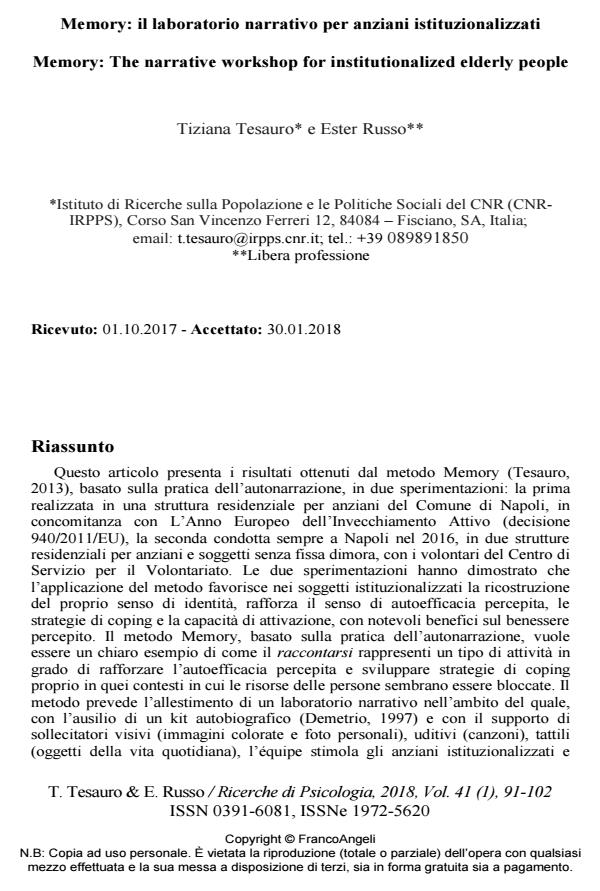Memory: The narrative workshop for institutionalized elderly people
Journal title RICERCHE DI PSICOLOGIA
Author/s Tiziana Tesauro, Ester Russo
Publishing Year 2018 Issue 2018/1
Language Italian Pages 12 P. 92-102 File size 188 KB
DOI 10.3280/RIP2018-001007
DOI is like a bar code for intellectual property: to have more infomation
click here
Below, you can see the article first page
If you want to buy this article in PDF format, you can do it, following the instructions to buy download credits

FrancoAngeli is member of Publishers International Linking Association, Inc (PILA), a not-for-profit association which run the CrossRef service enabling links to and from online scholarly content.
This article presents the results obtained by the method Memory (Tesauro, 2013), based on the practice of the self-narration, during two experimentations: the first one implemented in a residential structure for elderly of the Municipality of Naples, in concomitance with European Year for Active Aging (decision 940/2011/EU), the second one performed in Naples in 2016, in two residential structures for elderly and homeless subjects. Memory examines the activation processes of institutionalized elderly who have limited mobility capacity. The re-search query revolves around a central question: what could it mean to be active for subjects residing in a residential building and confined to a wheelchair or a bed? The basic idea is that narrating and narrating one’s own story could consti-tute a good practice of activation. The objective, therefore, is to promote storytelling as a practice of activation in these subjects. This pilot experiment shows that through the narrative practice it is possible to induce, clinically, processes of personal development that cure, producing on the subjects important changes, that are not always measurable, but not for this reason less real. In line with the approach of the so called narrative medicine the case Memory proves the therapeutic effects of the narration.
Keywords: Activation, not self-sufficiency, active aging, self-narration, ethnography.
Tiziana Tesauro, Ester Russo, Memory: il laboratorio narrativo per anziani istituzionalizzati in "RICERCHE DI PSICOLOGIA " 1/2018, pp 92-102, DOI: 10.3280/RIP2018-001007